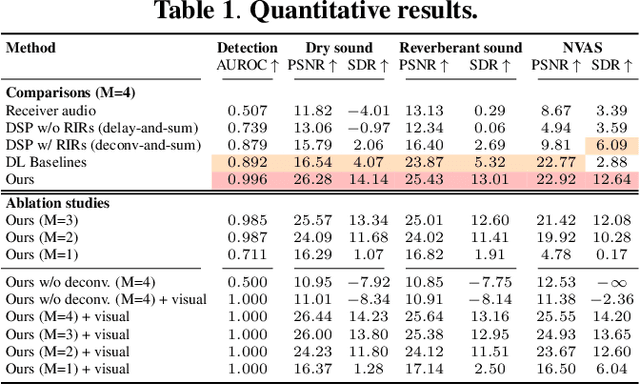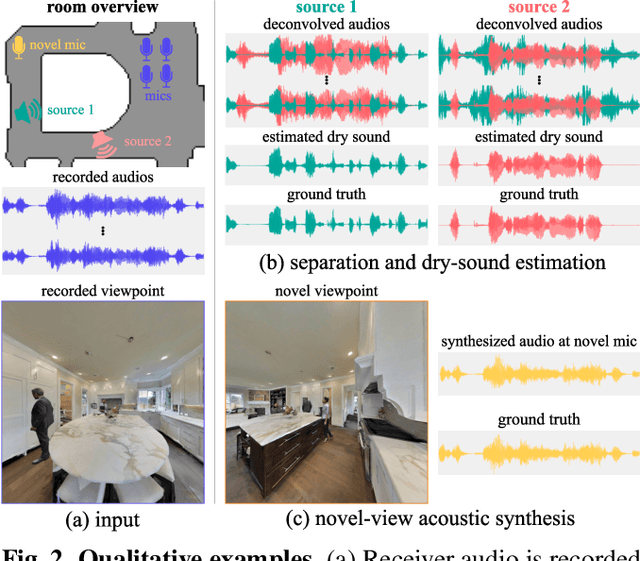Byeongjoo Ahn
Novel-View Acoustic Synthesis from 3D Reconstructed Rooms
Oct 23, 2023


Abstract:We investigate the benefit of combining blind audio recordings with 3D scene information for novel-view acoustic synthesis. Given audio recordings from 2-4 microphones and the 3D geometry and material of a scene containing multiple unknown sound sources, we estimate the sound anywhere in the scene. We identify the main challenges of novel-view acoustic synthesis as sound source localization, separation, and dereverberation. While naively training an end-to-end network fails to produce high-quality results, we show that incorporating room impulse responses (RIRs) derived from 3D reconstructed rooms enables the same network to jointly tackle these tasks. Our method outperforms existing methods designed for the individual tasks, demonstrating its effectiveness at utilizing 3D visual information. In a simulated study on the Matterport3D-NVAS dataset, our model achieves near-perfect accuracy on source localization, a PSNR of 26.44 dB and a SDR of 14.23 dB for source separation and dereverberation, resulting in a PSNR of 25.55 dB and a SDR of 14.20 dB on novel-view acoustic synthesis. Code, pretrained model, and video results are available on the project webpage (https://github.com/apple/ml-nvas3d).
Occlusion-Aware Video Deblurring with a New Layered Blur Model
Nov 29, 2016



Abstract:We present a deblurring method for scenes with occluding objects using a carefully designed layered blur model. Layered blur model is frequently used in the motion deblurring problem to handle locally varying blurs, which is caused by object motions or depth variations in a scene. However, conventional models have a limitation in representing the layer interactions occurring at occlusion boundaries. In this paper, we address this limitation in both theoretical and experimental ways, and propose a new layered blur model reflecting actual blur generation process. Based on this model, we develop an occlusion-aware deblurring method that can estimate not only the clear foreground and background, but also the object motion more accurately. We also provide a novel analysis on the blur kernel at object boundaries, which shows the distinctive characteristics of the blur kernel that cannot be captured by conventional blur models. Experimental results on synthetic and real blurred videos demonstrate that the proposed method yields superior results, especially at object boundaries.
 Add to Chrome
Add to Chrome Add to Firefox
Add to Firefox Add to Edge
Add to Edge